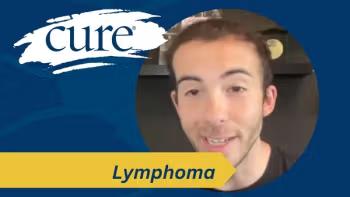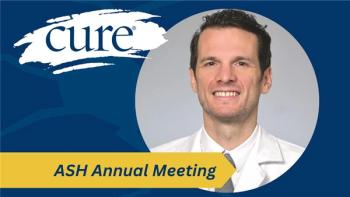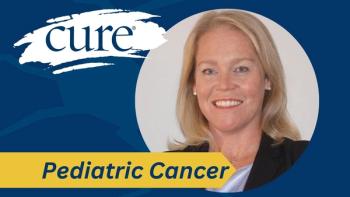
- Winter 2008
- Volume 7
- Issue 5
Medicine's New Epicenter? Epigenetics
Flipping cancer's "off" switch.
Longtime cancer researcher Jean-Pierre Issa, MD, recalls the evening in May of 1992, when he sat in a San Diego hotel room leafing through the program for the American Association for Cancer Research annual conference. Among the thousands of presentations listed, he spotted only two that mentioned epigenetics. One of them was his.
These days, he’s not feeling so alone. In fact, the more research reveals about epigenetics, the more crowded the scientific gatherings get. Epigenetics is looking like it may become just as important—if not more so—than genetics itself in shaping the future of cancer treatment, diagnosis, and even prevention. It is, as one researcher wrote earlier this year, “at the epicenter of modern medicine.”
Not bad for a concept pushed to the margins of cancer research just a decade ago. “It’s something that was completely unexpected,” says Tanya Hoodbhoy, PhD, of the National Institutes of Health. “People thought genetics was it.”
Epigenetics isn’t new—the word first appeared in scientific circles decades ago. But the full appreciation of epigenetics didn’t begin to emerge until the 1990s at the height of excitement for the Human Genome Project, but epigenetics was simply outshone by its star counterpart. From 1989 to 2003 researchers undertook a historic endeavor to map the 20,000 or so genes that make people into people. The hope was to decode the genes, compare flawed genes with intact ones, and reveal secrets of human diseases such as cancer.
Yet, as researchers waded deeper into the study of human genes, the genetic coding of a malignant cell often turned out to be, by all appearances, normal. So what would make a cell with no mutations go so horribly awry? The problem wasn’t necessarily with the genes themselves. There had to be something else.
The human genome still retains its status as the blueprint for the body. But the epigenome—the way the genome is marked and packaged inside a cell’s nucleus—tells a cell which of the many sets of instructions on that blueprint to follow, which ones to ignore, and which ones to follow over and over again. If the genome is the blueprint, the epigenome is the contractor directing how the walls and windows are made, and whether the plumbing is correctly installed.
Because it has the power to switch our genes off and on, epigenetics is the reason that a skin cell doesn’t look or act like a liver cell, even though they both carry the same DNA. Epigenetics is the reason that identical twins, even though they are pretty much genetic clones of one another, don’t get the same diseases. And it is often the reason that a perfectly normal cell goes bad.
“When a group of investigators started talking about this in the early ’90s, there was considerable skepticism at the time,” says Issa, of M.D. Anderson Cancer Center in Houston.
The skepticism is all but gone. The National Institutes of Health announced earlier this year that $190 million had been set aside for epigenetics research over the next five years. In announcing the funding, government officials noted that epigenetics has the potential to explain mechanisms of aging, human development, and the origins of heart disease, mental illness, and many other conditions. Some investigators, like Randy Jirtle, PhD, of Duke University Medical Center, think epigenetics may ultimately turn out to have a greater role in disease than genetics.
How do epigenetic changes occur? Research has established two main ways. In one, small chemical clusters called methyl groups attach to genes, as if they were charms hooking to a bracelet—a process called methylation. Most of the time, the charms silence the genes they connect to. In other words, the protein encoded by that gene is produced in much smaller amounts.
In the second method, epigenetics alters the way genes are bundled together. To squeeze several feet of genetic material inside the cell, DNA gets wound up like balls of twine. At the center of each ball are proteins called histones that allow the huge amount of DNA to be contained in a tightly wound chromosome structure. But this twine has messages written on it—the sequences of the genes—and the messages that the cell needs the most are wound more loosely, allowing for easier access and the production of proteins encoded by the gene. If the gene gets coiled too tightly around the histone, the cell can’t read it. This could lead to cancer if, for instance, this is the gene that helps keep cell growth under control. Or the twine could be too loose in the wrong place, allowing the cell to easily see a message that should be more concealed.
Epigenetic changes like methylation “by itself is not a good or bad process,” says Manel Esteller, MD, PhD, of the Spanish National Cancer Research Center in Madrid. It is part of the normal function of the cell. However, he says, too much or too little methylation can lead to problems. In other words, the methylation patterns might deactivate what are known as tumor suppressor genes that help protect a cell from cancer.
“I don’t think there will be a tumor type that would not involve an epigenetically inactivated tumor suppressor gene,” says Jirtle.
The good news, at least in cancer treatment, is that epigenetics, unlike genetics, can be repaired. Already, a handful of drugs are available that work to change the epigenetics of cancer cells, and many more await in the pipeline. “No doubt there are patients alive today who wouldn’t be alive if those drugs were not available,” says Issa.
Nancy Stanley counts herself among them. About three years ago, just before she turned 70, she began to feel faint at her daughter’s graduation in Alabama. She returned to her home in Texas, and was eventually diagnosed with acute myeloid leukemia, or AML. “I got the unspoken opinion that the chances weren’t real good,” she says.
She was offered a new drug, Dacogen (decitabine), approved in 2006 to treat myelodysplastic syndromes. It’s part of a class of drugs known as demethylating agents that work on the concept of epigenetics by stripping the methylation patterns in the genome, preferentially affecting cancer cells. Traditional cancer drugs often fight malignancy like a blast from a fire hose, drenching the cell to extinguish the blaze. Epigenetic drugs operate delicately. They don’t drown the entire cell. They slowly remove the oxygen, and allow the fire to burn itself out. A lower dose of the drug can actually work better than a higher dose.
Stanley took the drug for two years. “I improved almost immediately,” she says. Her side effects were negligible during the months on the drug. She has resumed her normal life in south Texas, where she is writing a murder mystery and spending time with her grandchildren and great grandchildren.
Dacogen, along with an epigenetic therapy approved in 2004 called Vidaza (azacitidine), works by preventing methylation. (Vidaza is also approved for myelodysplastic syndromes.) Freed from the excess methylation, tumor-suppressing genes can function again. Clinical trials have found that about 20 percent of patients respond to the drugs, with a drop in white blood cells reported as the most common serious side effect.
I don't think there will be a tumor type that would not involve an epigenetically inactivated tumor suppressor gene.
Zolinza (vorinostat), an epigenetic drug approved in 2006, works by helping the cell to package the DNA correctly around the histones, unwinding genes that control cell growth or constricting those that invite cell division with abandon. Two clinical trials of Zolinza, a histone deacetylase inhibitor, involving a total of more than 100 people with cutaneous T-cell lymphoma—the disease it’s approved for—found that about one-third of patients had a response to the drug. The most serious side effect was blood clots. Patients can also experience fatigue and a loss of appetite.
More than a dozen other drugs that modify the way DNA spools around histones are in development, says Owen O’Connor, MD, of the Herbert Irving Comprehensive Cancer Center at Columbia University. Most of them, like Zolinza, have shown an effect in T-cell lymphomas, but studies are also under way to test the agents for Hodgkin disease, leukemia, and other forms of cancer.
O’Connor points out, however, that doctors don’t entirely understand how these histone-targeting drugs operate. Generally, they help DNA to unwind from the histones. However, he adds, “opening your DNA may be a good thing, and may be a bad thing.” The drugs may be affecting more than the cancer-feeding genes, and they may be affecting other cells.
There is, in fact, much mystery surrounding epigenetics. So much so that most researchers say the field probably has more questions than answers at this point. That’s the reason why, earlier this year, the federal government announced the unprecedented boost in epigenetics funding. Among other things, researchers hope to map a human epigenome, in the same spirit that led scientists to sequence the genome. The challenge is daunting, however, since every person—and every cell within that person—has a unique epigenome flipping gene switches.
“Most people who are new coming into this fail to recognize how complex this is,” says Grace Ault, PhD, program director of the Division of Cancer Biology at the National Cancer Institute.
Since the field welled up from the cancer research community, epigenetics’ role in cancer could reach well beyond treatment. “It is really poised to be one of the most promising breakthroughs for diagnosis,” says Ault. For example, doctors might one day be able to detect changes in the colon that are epigenetic hallmarks for cancer, even before a malignancy appears. “They could be used to say, ‘This person is at risk for colon cancer,’ ” she says. And along those lines, a study published in a December 2007 issue of the journal Genes and Development reported that in mice, excess methylation of genes that normally keep cancer cells in line promoted the development of colon tumors.
It is really poised to be one of the most promising breakthroughs for diagnosis.
Since methylation run amok can be reversed, epigenetics might allow doctors to deactivate the seeds of cancer before actual growth. “One thing that’s known is that diet, exposure to pollutants, or drugs—those things can actually change the methylation patterns of DNA,” says Ault. Even the amount of exercise a person gets can change a cell’s epigenetics.
Take the colon cancer scenario: If a person was found to have excess methylation of tumor suppressor genes, he or she could, in theory, take medicine or make changes in eating or exercise habits to reverse the change. “I think the new frontier will be how do we incorporate this into prevention,” says Issa.
And prevention could start from the earliest time in a person’s life. While most epigenetic changes in sperm and eggs are erased during fertilization, not all of them are. Some studies, though they are preliminary, suggest that the living conditions of our grandparents might trigger epigenetic changes that pass to the next generation and determine our susceptibility to disease. If true, the finding implies that what we eat, whether we smoke, even how we live might affect the health of our descendants. “The fact that these effects can be transgenerational—that’s just incredible,” says Hoodbhoy.
The possibilities are still speculation, which makes epigenetics both one of the most profound and least understood concepts in all of modern biology. It offers tantalizing prospects doctors hardly thought possible. Researcher Andrew Feinberg, MD, of Johns Hopkins University School of Medicine wrote earlier this year in the Journal of the American Medical Association: “The most exciting idea in epigenetics is that it might be possible to intervene at the junction between the genome and the environment.”
It is as if scientists have suddenly been handed the keys to a sports car they never knew existed, with no idea where the road trip will take them. “Ten years from now,” Issa says, “I think things will be extraordinarily different than they are today.”
Articles in this issue
about 17 years ago
Message from the Editorabout 17 years ago
Letters from Our Readersabout 17 years ago
An Update From Friendsabout 17 years ago
New Law Protects College Students' Health Insuranceabout 17 years ago
Newman Passes, Cancer Aid Goes Globalabout 17 years ago
9th Annual Conference for Young Women Affected by Breast Cancerabout 17 years ago
YMCA and LAF Develop Exercise Programsabout 17 years ago
Q&A: CT Colonographyabout 17 years ago
Finasteride Comes Out on Top in Prostate Cancer Trialabout 17 years ago
Crazy Sexy Cancer Survivor



